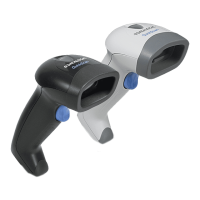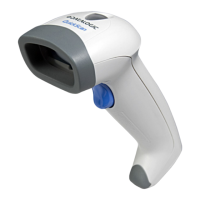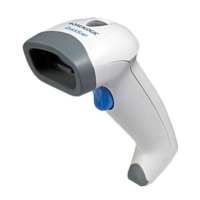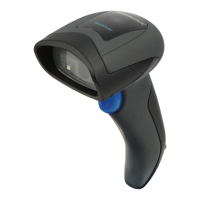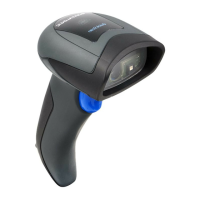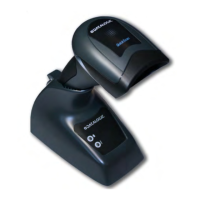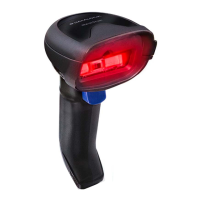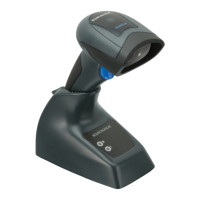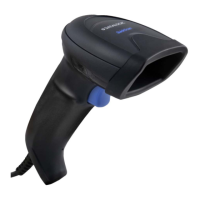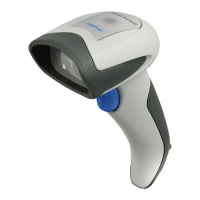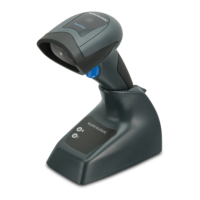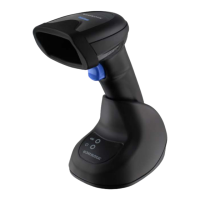Product Reference Guide 15
Chapter 4
Problem Isolation
This chapter provides troubleshooting information, technical specifications, and signal descrip-
tions (pinouts).
Problem Isolation
Tab l e 3 provides problem/remedy information for use in troubleshooting scanner functions.
Table 3. Troubleshooting
Problem Possible Causes Possible Solutions
Beeper Indications (Also see
LED and Beeper Indications on page 10)
Scanner emits frequent beeps. (USB
host interface only.)
The USB bus may put the scanner in a
state where power to the scanner is
cycled on and off more than once.
This is normal and usually happens when
the host cold boots.
Scanner emits low/high/low beeps.
ADF transmit error. Refer to the Advanced Data Formatting Pro-
grammer’s Guide for information about ADF
programming.
Invalid ADF rule is detected.
Scanner emits low/high beeps.
Input error, incorrect bar code or Cancel
bar code was scanned.
Scan the correct numeric bar codes within
range for the parameter programmed.
Scanner emits low/high/low beeps.
The Code 39 buffer was erased or there
was an attempt to clear or transmit an
empty buffer.
Normal when scanning the Code 39 Buffer-
ing Clear Buffer bar code or upon attempt
to transmit an empty Code 39 buffer.
Scanner emits low/high/low/high beeps.
Out of host parameter storage space.
Scan
Default Parameters on page 21.
Out of memory for ADF rules.
Reduce the number of ADF rules or the
number of steps in the ADF rules.
Scanner emits high/low beeps. The scanner is buffering Code 39 data. Normal.
Scanner emits high/high/high/low
beeps.
RS-232 receive error.
Normal during host reset. Otherwise, set the
scanner's RS-232 parity to match the host
setting.
Scanner emits four long low beeps.
A transmission error was detected in a
scanned bar code. The data is ignored.
This occurs if a unit is not properly config-
ured. Verify programmed options.
Scanner emits four short high beeps
(USB only).
Scanner has not completed initialization. Wait several seconds and scan again.
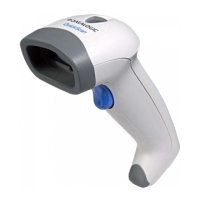
